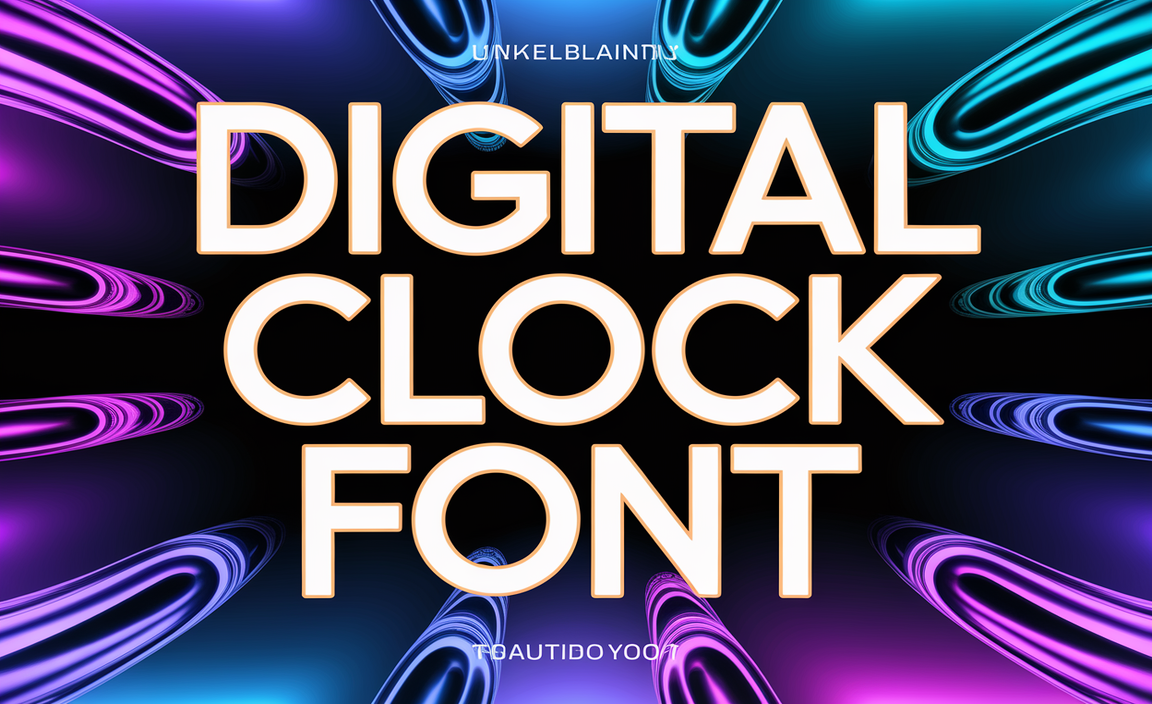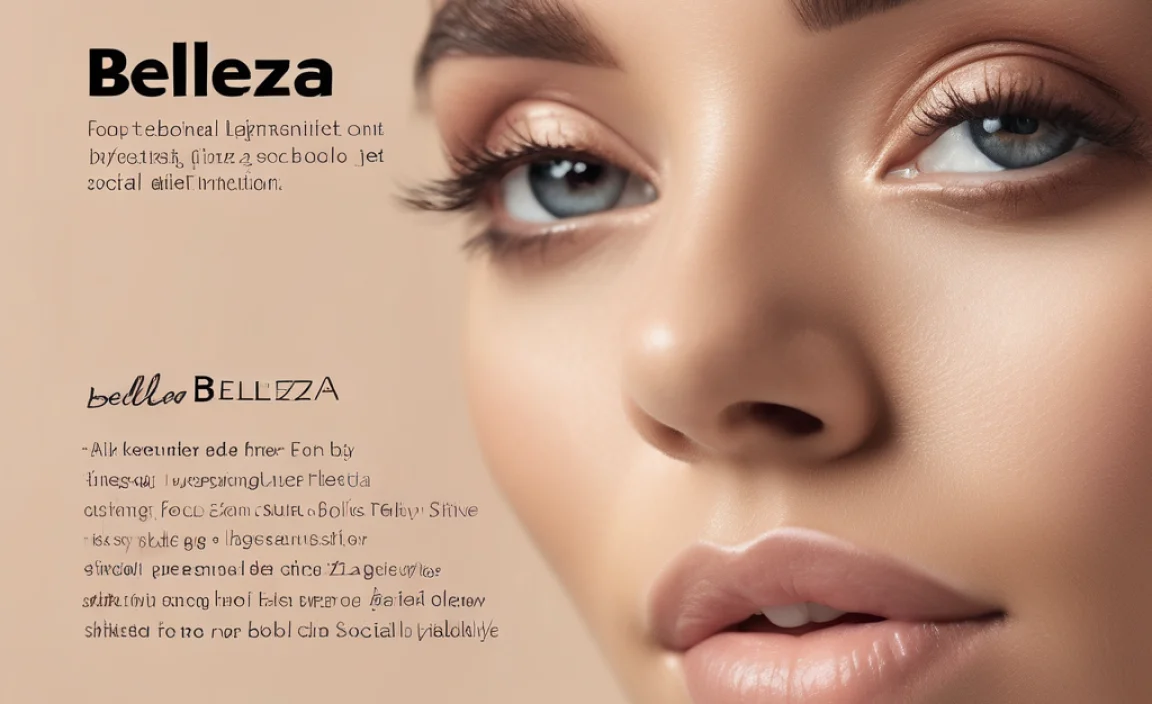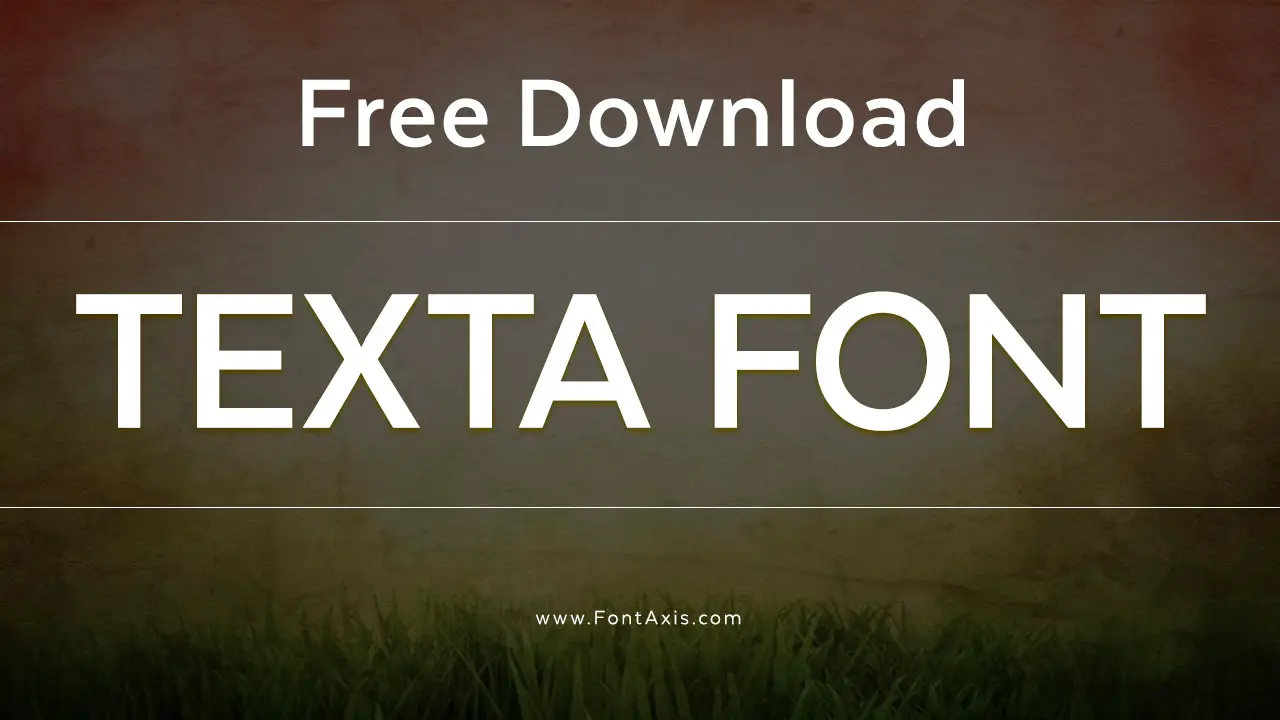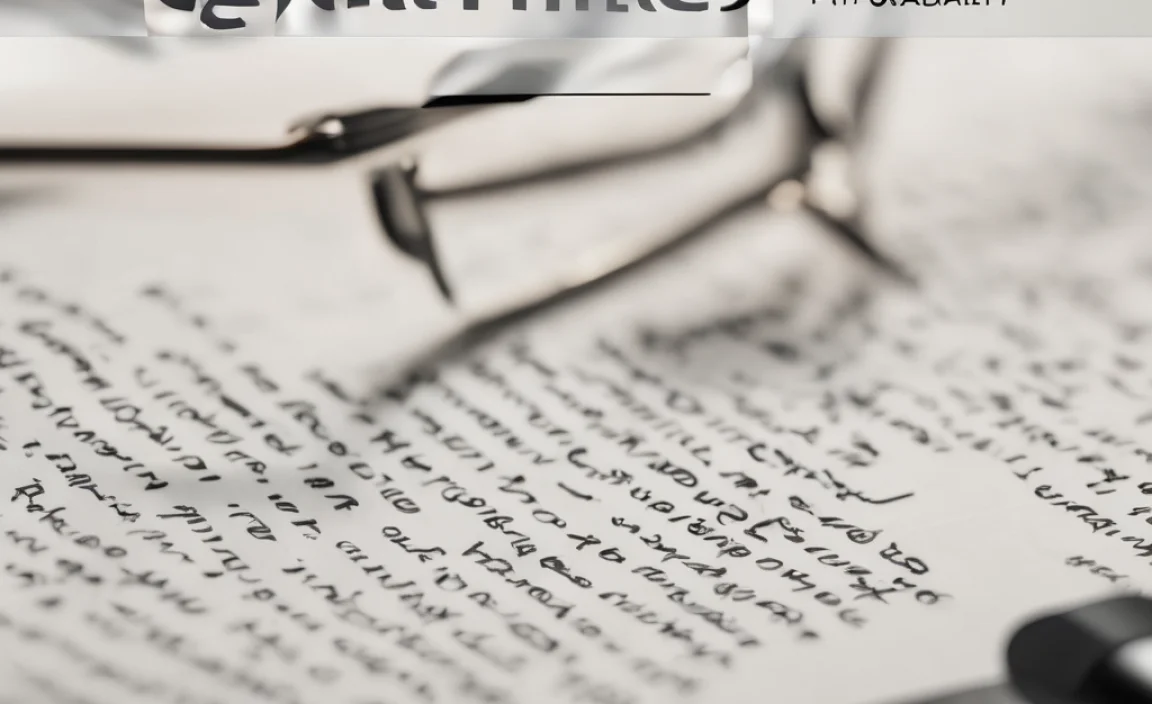The “Outer Wilds Font”: A Deep Dive into its Genius and Essential Use. Discover the core typography that makes this game’s narrative so impactful and how you can leverage its lessons for your own design projects.
Ever felt a game’s text just clicks? The “Outer Wilds Font” does exactly that. It’s not just about letters; it’s about immersing you in a mysterious universe. Many find it tricky to pin down what makes this font so special, leading to questions about its origin and how to use similar styles. This guide will break down the genius behind the “Outer Wilds Font,” making it easy for you to understand and even apply its principles. Let’s explore the world of typography that fuels epic adventures!
Unpacking the “Outer Wilds Font”: A Typographical Star
The “Outer Wilds Font” is a standout element in the game’s design, playing a crucial role in its immersive storytelling. It’s a carefully chosen typeface that evokes a specific feeling, contributing significantly to the overall atmosphere. For anyone asking, “What font is used in Outer Wilds?”, the answer lies in understanding its specific characteristics and design intent.
The Quest for the “Outer Wilds Font”: Identifying the Core Typeface
The primary typeface you’ll notice throughout “Outer Wilds” is often identified as Logotype Pro. This sans-serif font is favored for its clean, geometric structure, offering excellent readability across various screen resolutions and sizes, which is vital for a text-heavy exploration game. It strikes a balance between modernity and a classic, almost timeless feel, aligning perfectly with the game’s blend of advanced technology and ancient mystery.
Logotype Pro exemplifies a humanist sans-serif style. These fonts often have subtle variations in stroke width and open apertures, making them feel more approachable and less sterile than purely geometric sans-serifs. This is key to why the “Outer Wilds Font” feels so natural and engaging.
Why Logotype Pro (and Similar Fonts) Work So Well in “Outer Wilds”
The success of the “Outer Wilds Font” isn’t accidental. It’s a deliberate choice that enhances the player experience in several ways:
Readability: In a game about exploration and deciphering ancient texts, clear and legible typography is paramount. Logotype Pro ensures that even small pieces of text, like journal entries or environmental clues, are easy to read, regardless of the player’s screen.
Atmosphere and Tone: The font’s clean, slightly technical yet friendly appearance complements the game’s narrative. It feels both futuristic and grounded, fitting the sci-fi setting without being overly aggressive or alienating.
Consistency: Using a single, well-chosen font family for most of the game’s UI and text elements creates a cohesive visual experience. This consistency helps build trust and allows players to focus on the game’s narrative and mechanics.
Subtlety: The font doesn’t demand attention; it serves the content. This allows the stunning visuals and intricate lore of “Outer Wilds” to shine, while the text information is presented effectively and unobtrusively.
Beyond the Primary Font: Supporting Typefaces in “Outer Wilds”
While Logotype Pro is the star, it’s worth noting that complex games often utilize a small suite of fonts for different purposes, ensuring visual harmony and functional diversity. For “Outer Wilds,” supporting fonts that complement Logotype Pro might include:
Secondary Sans-Serifs: For specific UI elements or headings, slightly different weights or variations of humanist sans-serifs might be employed. These would still maintain the clean aesthetic but could offer more stylistic flair.
Inspirational Text: If there are specific in-game texts meant to feel ancient or handwritten (though less common as a primary UI font due to readability concerns), a well-chosen serif or even a subtle display font might be used sparingly. However, for the core experience of “Outer Wilds,” sans-serif fonts dominate for their clarity.
The beauty of “Outer Wilds” typography lies in its restraint. The primary font is strong enough to carry the burden, and any supporting fonts are used with intention to enhance, not detract.
Why Fonts Matter: The Science and Art Behind “Outer Wilds'” Success
The choice of font, often referred to as “the Outer Wilds font” by fans, is a prime example of how typography influences perception and engagement. This area of design, known as typography, is crucial for effective communication.
The Impact of Typeface Choice
Choosing the right font is like choosing the right voice for a character. Different typefaces convey different emotions and messages:
Serif Fonts: These have small decorative strokes (serifs) at the end of letterforms. They often feel traditional, classic, and are excellent for long blocks of body text in print, as the serifs can guide the eye. Think of the Times New Roman or Garamond.
Sans-Serif Fonts: Lacking these decorative strokes, sans-serifs (e.g., Arial, Helvetica, Logotype Pro) appear cleaner, more modern, and often more approachable. They are highly versatile and perform exceptionally well on screens.
Display Fonts: These are characterized by their unique and often decorative style, designed for headlines and short bursts of text where impact is key (e.g., fantasy or sci-fi titles).
Script Fonts: Mimicking handwriting, these fonts can be elegant, formal, or casual depending on their style. They are best used sparingly for decorative purposes.
The “Outer Wilds font” leans heavily into the strengths of sans-serifs for its user interface, prioritizing clarity and a modern, slightly futuristic feel that aligns with its gameplay.
Readability vs. Aesthetics: Finding the Sweet Spot
A common challenge in design is balancing aesthetic appeal with readability. A font might look stunning, but if it’s hard to read, it fails its primary purpose.
When selecting a font, consider:
X-Height: The height of lowercase letters like ‘x’. A taller x-height generally improves readability, especially at smaller sizes.
Aperture: The openings in letters like ‘c’ or ‘e’. More open apertures enhance legibility.
Letter Spacing (Kerning & Tracking): The space between individual letters and between words. Proper spacing is critical for smooth reading.
Weight and Contrast: The difference between thick and thin strokes. Fonts with high contrast can be elegant but may be harder to read in smaller sizes.
The “Outer Wilds font,” Logotype Pro, excels because it achieves a beautiful balance. It possesses a distinct personality without compromising on legibility.
Applying “Outer Wilds Font” Principles to Your Designs
You don’t need to be a seasoned graphic designer to harness the power of typography. Understanding the principles behind why the “Outer Wilds font” is so effective can elevate your own projects.
Step-by-Step Guide to Choosing Your “Outer Wilds Font” Equivalent
1. Define Your Project’s Goal and Audience: What is the purpose of your design? Who are you trying to reach? For a game like “Outer Wilds,” the goal is immersion and information delivery to a broad audience interested in mystery and exploration. For your project, a clean, approachable sans-serif might work for a tech blog, while a more structured serif might suit a historical archive.
2. Consider the Tone and Atmosphere: Does your project feel adventurous, serene, professional, or whimsical? Choose fonts that visually reflect this tone. The “Outer Wilds font” is clean and slightly technical, evoking a sense of organized discovery.
3. Prioritize Readability: Especially for longer texts or interfaces, legibility is non-negotiable. Look for fonts with clear letterforms, good spacing, and a comfortable x-height.
4. Explore Sans-Serif Options: For general-purpose use and digital interfaces, sans-serifs are often a safe and effective choice. Browse humanist sans-serifs, geometric sans-serifs, and grotesque sans-serifs.
5. Tip: Look for Versatile Font Families: Many font families come with a range of weights (light, regular, bold) and styles (italic). This allows you to create hierarchy and visual interest using a single typeface, similar to how “Outer Wilds” maintains consistency.
6. Test Your Choices: Mock up your text with the chosen fonts. View them at different sizes and on different devices to ensure they hold up.
Essential Tools and Resources for Font Exploration
Discovering the perfect font is an exciting journey. Here are some excellent resources:
Google Fonts: A vast library of free, open-source fonts that you can use for web and print projects. Many offer expansive family options. Explore their sans-serif collections, many of which are inspired by classic designs.
Adobe Fonts: If you have an Adobe Creative Cloud subscription, you gain access to a curated library of high-quality fonts, including many professional and unique options.
Font Squirrel: This site offers a curated list of free fonts that are licensed for commercial use, making it a great resource for businesses and designers on a budget.
MyFonts: A comprehensive marketplace for commercial fonts. While not free, it’s an excellent place to see a wide range of font styles and discover premium options.
Sites like WhatTheFont: If you’ve seen a font you like but can’t identify it, tools like WhatTheFont can help by analyzing an image. This is how many discover the “Outer Wilds font” and wish to replicate it.
Creating a Typography Style Guide for Your Project
Once you’ve chosen your primary font (and any secondary ones), it’s wise to create a mini style guide. This ensures consistency across all your content.
Consider including:
Primary Font: The main typeface for body text and UI.
Heading Fonts: What fonts and weights to use for H1, H2, H3, etc.
Accent Fonts: Any display or script fonts used sparingly for special emphasis.
Color Palette: Defined text colors to ensure contrast and legibility.
Usage Notes: Specific rules on when and where to use each font or style.
This structured approach prevents haphazard font choices and ensures your design maintains a professional and cohesive look, much like the well-oiled machine that is the “Outer Wilds Font” system.
Contrasting “Outer Wilds Font” Styles: Sans-Serif vs. Serif in Practice
To further appreciate the genius of the “Outer Wilds Font,” let’s contrast it with serif alternatives and see why sans-serif was the superior choice for its context.
Logotype Pro (The “Outer Wilds Font” Vibe): A Sans-Serif Champion
From the Logotype family, Logotype Pro is characterized by:
Geometric Structure: Clean, circular forms and consistent stroke widths.
Open Apertures: Easily recognizable letter shapes, crucial for fast reading.
Modernity: Conveys a sense of technology and the present, or near future.
Versatility: Works well in both very small text interfaces and larger display uses.
Example of Logotype Pro Style
This is an example mimicking the clean, readable style of Logotype Pro. Notice how the letters are clear and distinct, making it easy to scan information.
A Hypothetical Serif Alternative: What If “Outer Wilds” Used a Serif?
Imagine if “Outer Wilds” opted for a classic serif font for its UI. While beautiful, this choice would present significant challenges:
Readability at Small Sizes: Serif details can become muddy or disappear on lower-resolution screens or at very small font sizes, hindering gameplay.
Tone Mismatch: A highly ornate or traditional serif might clash with the game’s sci-fi, exploration-focused theme, creating a disconnect.
Visual Weight: Many serif fonts are designed for print and can feel visually “heavier” on screen, potentially making interfaces feel cluttered.
Comparison Table: Sans-Serif vs. Serif for “Outer Wilds”
| Feature | Sans-Serif (e.g., Logotype Pro) | Serif (e.g., Garamond) |
| :———— | :————————————————————– | :———————————————————– |
| Readability | Excellent on screens, especially at small sizes. Clear letterforms. | Can be excellent for body text in print, but may struggle on screens at small sizes. |
| Tone | Modern, clean, approachable, often technical or neutral. | Traditional, classic, elegant, authoritative, or literary. |
| Aesthetics | Streamlined, simple, direct. | Detailed, ornate, classic. |
| “Outer Wilds” Fit | Perfect for sci-fi, exploration, and clear UI information. | Might enhance ancient texts, but less ideal for core UI. |
| Digital Use | Highly recommended for web and app interfaces. | Best for longer-form print content, or large display use. |
This comparison highlights why the “Outer Wilds font” selection was so spot-on. It leveraged the inherent strengths of sans-serif typography for its specific needs.
Case Study: How Typography Enhances Immersion in “Outer Wilds”
The success of “Outer Wilds” is a testament to its cohesive design, and typography is a key, often overlooked, component.
The Power of the Journal Entries
When you discover a new log or piece of lore in “Outer Wilds,” it appears in your ship’s log. This text is presented using Logotype Pro. This consistent, readable format ensures that players can quickly absorb the information without distraction.
No Interruptions: The font doesn’t fight for attention; it smoothly delivers narrative
Sense of Discovery: Each entry feels like a tangible clue, and the clean font makes it feel like professional documentation within the game’s world.
Urgency and Importance: The straightforward presentation implies that this information is vital to the player’s understanding and progress.
UI Elements: Guiding the Explorer
From the fuel gauge to the signal scope, every UI element in “Outer Wilds” relies on clean typography.
Clarity of Information: Crucial gameplay data like time remaining, proximity to celestial objects, or signal strength must be instantly understood.
Intuitive Design: The use of a consistent font family across all UI elements creates a predictable and intuitive user experience. Players don’t have to “learn” new text styles for different menus or tools.
* Aesthetic Cohesion: The font ties together the visual language of the game, from alien text to spaceship readouts.
The “Outer Wilds font” isn’t just a design choice; it’s an integral part of the game’s narrative and user experience, proving that thoughtful typography can elevate any digital product. For further reading on typography in game design, resources from institutions like Interaction Design Foundation offer valuable insights into user interface principles.
FAQ: Your “Outer Wilds Font” Questions Answered
Wondering about the specifics? Here are some common questions about the “Outer Wilds Font” and typography in general.
Q1: What is the main font used in Outer Wilds?
The primary font widely recognized and used for the majority of text in “Outer Wilds” is Logotype Pro, a clean and versatile sans-serif typeface.
Q2: Is Logotype Pro a free font?
Logotype Pro is a commercial font and is not typically available for free. However, many free fonts offer a similar aesthetic and can be found on platforms like Google Fonts or Font Squirrel.
Q3: How can I find fonts that look like the “Outer Wilds Font”?
To find similar fonts, search for “humanist sans-serif,” “geometric sans-serif,” or “clean sans-serif fonts.” Look for features like open apertures, balanced letterforms, and good readability. Google Fonts’ “Open Sans,” “Roboto,” or “Lato” are good starting points.
Q4: Why is sans-serif font like Logotype Pro good for games?
Sans-serif fonts are generally more readable on digital screens, especially at smaller sizes. Their clean, modern appearance also fits well with many contemporary game aesthetics, including sci-fi and exploration themes, without distracting from gameplay.
Q5: Can I use the “Outer Wilds Font” (Logotype Pro) in my own projects?
If you wish to use Logotype Pro legally in your projects, you will need to purchase a license from the font foundry or authorized distributors. Always check font licensing before commercial use.
Q6: What makes a font “good” for website body text?
Good body text fonts are highly readable. For screens, this means sans-serifs with clear letterforms, adequate spacing, and a comfortable x-height. Serif fonts can also work, but they often perform better at larger sizes or in print.
Q7: How can choosing the right font improve my blog’s engagement?
A well-chosen font enhances readability, making your content more accessible and enjoyable. It also contributes to your brand’s identity and professionalism. For example, a friendly font can make a blog feel more approachable, while a sophisticated font might convey authority.
Conclusion: The Lasting Legacy of the “Outer Wilds Font”
The discussion around the “Outer Wilds Font” is a perfect illustration of how typography is more than just decorative. It’s a functional and emotional element that shapes our experience with digital content. The choice of Logotype Pro in “Outer Wilds” was a stroke of genius, providing the clarity, atmosphere, and consistency needed to fully immerse players in its intricate solar system.
For designers, content creators, or anyone looking to enhance their visual communication,









